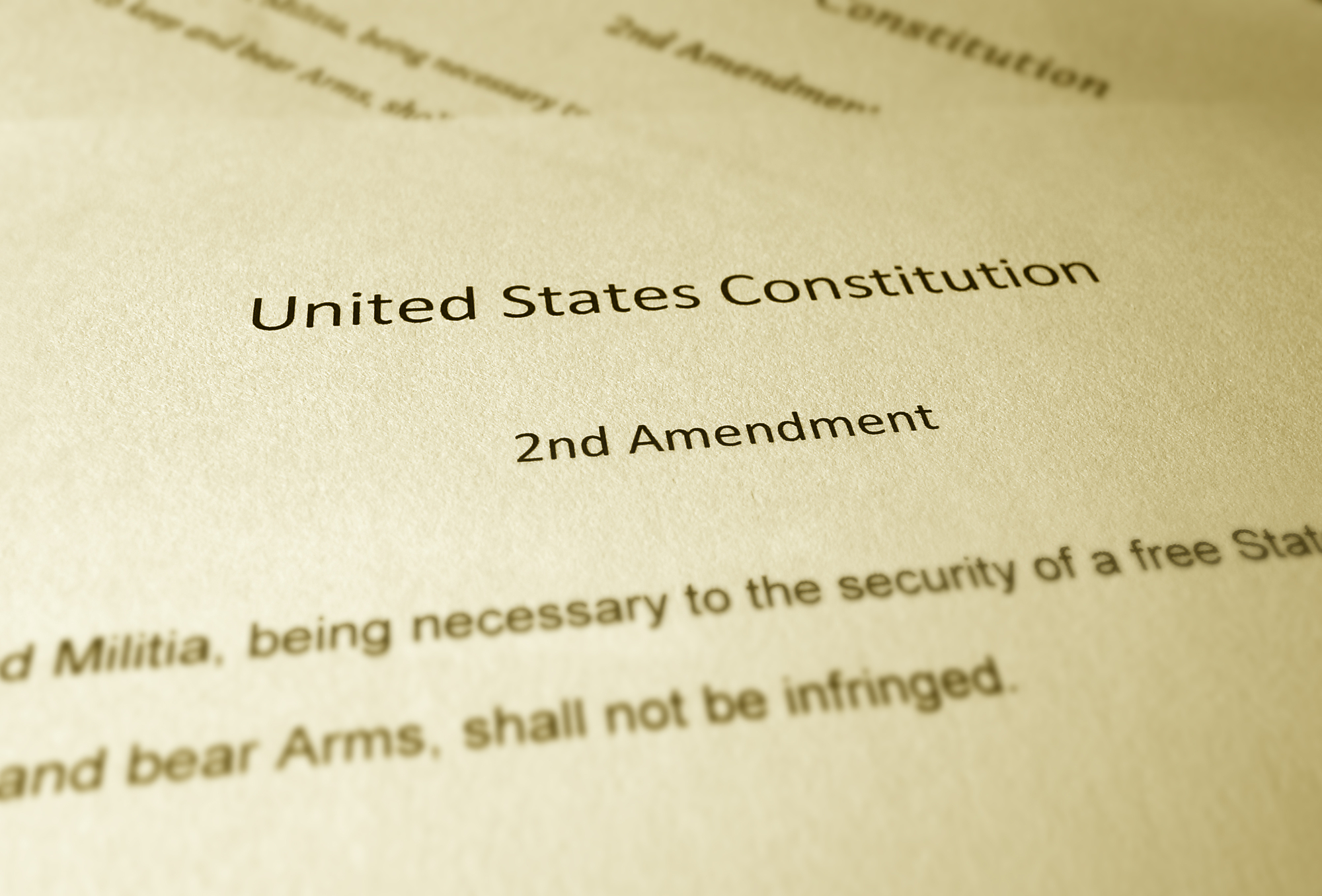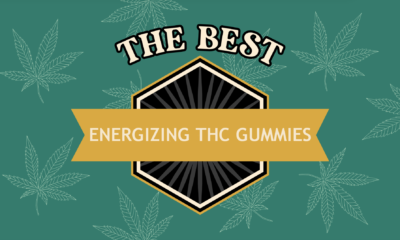Cannabis News
Cannabis Law and Gun Rights: News from SCOTUS
Published
9 months agoon
By
admin
Last week, the US Supreme Court decided its most recent Second Amendment case, United States v. Rahimi. Earlier this month, SCOTUS decided Garland v. Cargill, which could also spell changes for the cannabis industry later down the road. I wrote about the Rahimi case in earlier posts, as the outcome of the case could have affected gun rights for cannabis users. Today, I want to break down some key things about the Rahimi and Cargill decisions and what they mean for the future of gun rights for cannabis users. If you’re not familiar with the issues or my writing on them, I suggest you first read some of these posts:
What is the deal with cannabis users and gun rights?
Federal law defines cannabis users as “prohibited persons” who cannot own or possess guns, regardless of the Second Amendment. In 2022, the US Supreme Court decided New York State Rifle & Pistol Association, Inc. v. Bruen, creating a new test to evaluate whether a law restricting gun rights is constitutional. Since then, a number of federal courts have held that federal restrictions on gun rights for cannabis users are unconstitutional. One of those cases was appealed to the Supreme Court earlier this year.
What happened in the Rahimi case?
In the Rahimi case, different provisions of the same federal law were challenged. Specifically, the issue was whether a person subject to a domestic violence restraining order (DVRO) could be deemed a “prohibited person.” A federal appellate court last year held that the DVRO prohibition was unconstitutional, but in an 8-1 decision, the Supreme Court disagreed. As a result, persons subject to DVROs may not own firearms.
Without getting too far into the weeds, SCOTUS did what Bruen required it to do: examined historical laws regulating firearm possession and determined that there is a history of laws justifying restriction of gun ownership by persons adjudged pose a threat of violence to others.
Is Rahimi relevant to cannabis users?
Yes and no. To start, Rahimi does not mention cannabis use at all, as it is narrowly focused on a different federal restriction on gun possession by persons subject to DVROs. Additionally, Rahimi does not backtrack from the Bruen decision, which is the same SCOTUS decision that has allowed numerous federal courts to find the federal cannabis law restrictions unlawful.
Turning back to the lower court decisions that have addressed cannabis, the federal government has consistently argued (generally unsuccessfully) that federal gun restrictions are justified because cannabis users pose some kind of unique risk or threat. In fact, in its brief in opposition to SCOTUS granting review to the cannabis run rights case mentioned above, the federal government wrote “armed drug users pose a grave danger to themselves and to society.”
I can imagine that attorneys for the federal government will argue that Rahimi‘s rationale supports federal restrictions on cannabis users’ Second Amendment rights. But I think Rahimi is very distinct from the present situation as the restriction with respect to cannabis users is so much more broad than the DVRO restriction.
The federal law that restricts cannabis users’ Second Amendment rights has no requirement that a person be found to be a danger to themselves or others. Indeed it applies whether or not they are a even intoxicated at or around the time of a gun purchase or possession. This is vastly more broad than the DVRO restriction, which applies to someone is subject to a court order that:
- was issued after a hearing of which such person received actual notice, and at which such person had an opportunity to participate;
- restrains such person from harassing, stalking, or threatening an intimate partner of such person or child of such intimate partner or person, or engaging in other conduct that would place an intimate partner in reasonable fear of bodily injury to the partner or child; and
-
- includes a finding that such person represents a credible threat to the physical safety of such intimate partner or child; or
- by its terms explicitly prohibits the use, attempted use, or threatened use of physical force against such intimate partner or child that would reasonably be expected to cause bodily injury . . . .
As you can see, this is a far, far more exacting standard than is applied to drug users, who are categorically denied Second Amendment rights.
With that in mind, and given the total lack of historical prohibition on cannabis users owning guns, it’s pretty easy to see how courts would have an easy job dismissing claims that cannabis users are so dangerous that the government is justified taking away their constitutional rights.
My prediction on a SCOTUS cannabis/gun rights decision
If SCOTUS hears a case challenging federal restrictions on gun rights for cannabis users, I predict that the law is struck down, something I’ve predicted in basically every post I’ve made on the subject since Bruen. However, in light of a different SCOTUS gun case, I think that language in the decision could set up later battles between the federal government and cannabis users.
Now let’s talk about Cargill. In that case, SCOTUS held that ATF regulations that prohibited bump stocks were unconstitutional. ATF had issued rules prohibiting bump stocks on the grounds that they constitute “machineguns” under the federal law that prohibits machine guns. The Court concluded that bump stocks are not “machineguns” within the meaning of the statute, and so ATF had exceeded its authority in issuing the rule.
In Cargill, Justice Samuel Alito issued a concurring opinion in which he agreed that bump stocks do not constitute “machineguns” but noted that:
There is a simple remedy for the disparate treatment of bump stocks and machineguns. Congress can amend the law—and perhaps would have done so already if ATF had stuck with its earlier interpretation. Now that the situation is clear, Congress can act.
In other words, Justice Alito signaled that Congress could remedy the situation by prohibiting bump stocks via legislation, which would allow ATF to prohibit them in the future.
Why is this relevant to cannabis? While it seems likely that SCOTUS would strike down federal gun rights restrictions for cannabis users, it seems equally likely that the Court could indicate that restrictions that were narrowly tailored to prevent cannabis users from possessing guns while intoxicated could be constitutional.
Depending on who is President and the composition of Congress, its easy to see how federal legislation could be enacted that would prohibit intoxicating cannabis users from using or possessing guns. But as with anything else, it’s easy to see how this could lead to future challenges. What does it mean to be “intoxicated,” for example?
Conclusion
SCOTUS’s recent gun rights decisions don’t change a whole lot for cannabis users, but they do reveal a few key things that could change the game dramatically in the coming years. For more updates, stay tuned to the Canna Law Blog.
You may like
Cannabis News
Daily Cannabis Use Can Help People Get Off Opioids (STUDY)
Published
24 hours agoon
March 28, 2025By
admin

Cannabis daily can help people get off opioids (STUDY)
As Donald Trump continues to trudge on in his second term, he’s made it abundantly clear that tackling the fentanyl crisis is high on his agenda. The rhetoric is bold and aggressive – promises to go after cartels with military force, threats against drug dealers, and a generally hawkish stance toward drug trafficking. It’s the kind of tough talk that plays well to his base, but the question remains: will it actually solve anything?
If we look at his appointments and policy directions, it seems we’re heading for War on Drugs 2.0 rather than an innovative approach to a complex problem. History has taught us that you can’t simply bomb, arrest, or threaten your way out of drug epidemics. These tactics have been tried for decades with little success.
There is, however, one solution hiding in plain sight that could revolutionize Trump’s approach to the opioid crisis – cannabis legalization. Yes, you read that correctly. If Trump were to take the bold step of federally legalizing cannabis, he could potentially cement his legacy as one of the most transformative presidents in modern history.
It sounds counterintuitive at first – fighting drugs with another drug? But the evidence is mounting that cannabis could be a powerful weapon against opioid addiction and overdose deaths. Recent studies are showing promising connections between cannabis use and reduced opioid dependency.
So how exactly would legalizing a plant help combat the deadliest drug crisis in American history? Well, let me tell you!
A groundbreaking study published last week in the journal Drug and Alcohol Review has added significant weight to the argument that cannabis could help combat the opioid crisis. The research, conducted by an eight-person team from the British Columbia Centre on Substance Abuse, the University of British Columbia, and Simon Fraser University, examined data from 1,242 people who used drugs while also living with chronic pain.
Their findings were striking: “Participants reporting daily cannabis use exhibited higher rates of cessation compared to less frequent users or non-users.” In other words, those who used cannabis every day were more likely to quit using opioids altogether. This effect was particularly pronounced among men, suggesting “potential differences in cannabis use behavior and effects” between sexes.
This isn’t an isolated finding. A growing body of research supports the idea that cannabis can serve as an effective substitute for opioids. A federally funded study found that in states with legal marijuana, prescriptions for opioid pain medications dropped significantly among commercially insured adults. Another study discovered that legalizing medical cannabis appeared to significantly reduce payments from opioid manufacturers to doctors specializing in pain management – further evidence that cannabis was replacing prescription painkillers.
Perhaps most compelling is the research linking cannabis legalization to reduced fatal opioid overdoses. One study estimated that recreational marijuana legalization “is associated with a decrease of approximately 3.5 deaths per 100,000 individuals.” When you consider that over 107,000 Americans died from drug overdoses in 2021 alone (with 75% involving opioids), the potential life-saving impact becomes clear.
The opioid crisis has ravaged communities across America, destroying families and costing the economy an estimated $1.5 trillion annually in healthcare costs, criminal justice expenses, and lost productivity. Cannabis legalization offers a multi-pronged solution: it provides a safer alternative for pain management, reduces dependency on opioids, and potentially saves thousands of lives each year.
Beyond addressing the opioid epidemic, legalizing cannabis would create hundreds of thousands of new jobs, generate billions in tax revenue, reduce unnecessary incarcerations (particularly in communities of color), and open up new avenues for medical research and international commerce.
For a businessman-turned-president like Trump, the economic case alone should be compelling. The question is whether he has the vision to seize this opportunity or if he’s too beholden to interests that benefit from prohibition – pharmaceutical companies, private prisons, and law enforcement agencies that rely on drug war funding. If he truly wants a slam dunk policy that would address the fentanyl crisis while creating jobs and stimulating the economy, cannabis legalization could be his legacy-defining move.
While we wait for politicians to catch up with science, those suffering from chronic pain or other conditions treatable with cannabis might consider a more immediate solution: growing your own medicine.
Now, let me be crystal clear – I’m not advocating breaking the law. If cannabis is illegal in your state, I don’t want you risking arrest and criminal charges. However, speaking personally, if I were suffering from chronic pain and had few options, I might consider a small, discreet grow operation of 2-4 plants. This would be my absolute secret – something I’d never discuss with anyone, ever.
The beauty of growing your own cannabis extends far beyond just having a supply of medicine. There’s something profoundly therapeutic about nurturing a plant from seed to harvest. You develop patience, attention to detail, and a deeper connection to the plant medicine you’re creating. It’s a relationship, not just a transaction.
When you grow your own cannabis, you also know exactly what’s in it. No pesticides, no mysterious contaminants – just pure plant medicine cultivated with care. You can select strains specifically bred for your conditions, whether that’s pain, anxiety, insomnia, or inflammation. The process puts the power of healing back in your hands.
Beyond the primary flower, home growers can make use of every part of the plant. Fan leaves can be juiced for their non-psychoactive cannabinoid content. Trim can be used to make topicals or edibles. Even the stems can be used to make teas or tinctures. Nothing goes to waste.
There’s also a significant cost advantage. A small home grow can produce enough medicine to last months, potentially saving thousands of dollars compared to dispensary prices. For those on fixed incomes or without insurance coverage for their conditions, this economic benefit can’t be overstated.
I firmly believe that any meaningful cannabis legalization bill must include provisions for home cultivation. Without the right to grow your own medicine, legalization is merely transferring authority from one controlling entity to another. It’s still authoritarianism masquerading as freedom, just with different gatekeepers.
The right to grow is fundamental to true cannabis freedom. It acknowledges the plant for what it is – a natural resource that should be accessible to all, not just those who can afford to purchase it from state-sanctioned vendors. Home cultivation empowers individuals to take control of their own health without excessive dependence on either the black market or corporate cannabis.
While we push for policy change at the federal level, let’s not forget that sometimes the most revolutionary act is simply planting a seed.
The evidence is overwhelming: we’re facing an unprecedented opioid epidemic that’s claiming thousands of American lives every year, and cannabis represents a viable, evidence-based solution to this crisis. The latest research confirming that daily cannabis use can help people quit opioids adds to the mountain of data supporting cannabis as a harm reduction tool.
Yet despite the scientific consensus, I’m not holding my breath for federal action. The sad reality is that most politicians on both sides of the aisle receive substantial funding from industries that benefit directly from cannabis prohibition – pharmaceutical companies pushing their own patented pain medications, private prison corporations dependent on drug offenders to fill beds, and police departments that receive military-grade equipment through drug war budgets.
These entrenched interests have billions of reasons to maintain the status quo, and they’ve proven remarkably effective at delaying meaningful reform for decades. Even as public opinion has shifted dramatically in favor of legalization, with roughly two-thirds of Americans now supporting it, policy changes creep along at a glacial pace.
Perhaps Trump, with his penchant for disruption and unpredictability, could surprise us all by embracing cannabis reform as part of his anti-fentanyl strategy. It would certainly align with his populist messaging and “America First” economic policies. A thriving legal cannabis industry would create jobs, boost tax revenues, and potentially save countless lives from opioid overdoses.
I can hope for such bold leadership, but I’ll continue preparing for the long, slow grind of incremental progress. In the meantime, the opioid crisis rages on, claiming lives that could potentially be saved with a plant that’s been used medicinally for thousands of years. If that’s not a tragedy of policy failure, I don’t know what is.
CANNABIS TO REDUCE OPIOID USE, READ ON…
DR. OZ SAYS CANNABIS CAN GET PEOPLE OFF OPIOIDS, HOW DOES IT WORK?
Cannabis News
The Future of Cannabis and Sleep Medicine
Published
2 days agoon
March 28, 2025By
admin

Have you ever wondered how cannabis might play a role in improving your rest? What if there was a natural, effective alternative to traditional medications for better relaxation? As the world of sleep medicine evolves, cannabis is becoming an increasingly popular option for those struggling with sleep disorders. Thanks to its natural properties, this plant offers a promising path to better rest, with the potential to reshape the future of sleep medicine.
How Cannabis Supports Restful Sleep
The best strain for sleep often contains a balanced combination of THC and CBD, the two primary compounds that have been linked to improved rest quality in multiple studies. THC is known for its ability to relax both the body and mind, making it easier to unwind and fall asleep. It can also extend the time spent in deep, restorative stages of rest. On the other hand, CBD works to reduce anxiety and stress, which are common causes of insomnia.
By addressing both the mental and physical factors that interfere with rest, cannabis offers a holistic approach to improving relaxation. In addition to aiding in sleep onset and depth, it may help alleviate disruptions caused by chronic pain, anxiety, or even nightmares in PTSD patients. For those searching for natural remedies, cannabis is quickly emerging as a powerful tool in the world of medicine.

Strain for Rest: Tailoring Your Experience
Depending on your needs, the strain for sleep can vary. While indica strains are generally favored for their deeply relaxing effects, hybrid strains offer a balance of relaxation without overwhelming sedation. For those who struggle with both falling asleep and staying asleep, strains high in both THC and CBD are popular choices.
THC is beneficial for falling asleep, while CBD may help maintain consistent, uninterrupted cycles of rest. Terpene profiles also play a significant role in determining the effects of cannabis, with terpenes like myrcene and linalool known for their calming properties. As the cannabis industry continues to grow, dispensaries are offering personalized recommendations based on individual needs, helping you find the right strain for better relaxation.

The Role of CBD in Medicine
CBD is rapidly becoming a cornerstone in the world of sleep medicine. Unlike THC, CBD is non-psychoactive and does not cause the “high” typically linked to cannabis. This makes it an appealing option for people looking to improve their rest without feeling intoxicated.
Research shows that CBD may help improve the quality of rest by reducing anxiety, promoting relaxation, and even alleviating symptoms of conditions that disrupt rest, such as pain or insomnia. It is often taken in tincture or capsule form, allowing for precise dosing. As a result, CBD is gaining popularity not only as a sleep aid but also as a long-term solution for maintaining a consistent rest routine.
Cannabis: A Natural Sleep Aid Alternative
Prescription aids have long been the go-to solution for those suffering from insomnia and other rest disorders. However, they come with a range of side effects, from grogginess to dependency. Cannabis offers a natural alternative that is both effective and less likely to cause adverse reactions. As more people look for alternatives to traditional sleep medications, cannabis is becoming an increasingly popular choice.
Unlike prescription drugs, cannabis works with the body’s natural systems, reducing the likelihood of dependence. Additionally, it helps with the underlying causes of sleep issues, such as anxiety and pain, making it a more holistic approach to rest medicine. This shift toward natural remedies signals a growing demand for plant-based sleep solutions. The future of sleep medicine looks brighter as cannabis continues to gain acceptance in this field.
What the Future Holds
As the cannabis industry evolves, the potential for it to revolutionize sleep medicine is enormous. In the future, more advanced research into cannabis’s specific effects on slumber can be expected, leading to better, more targeted treatments. With the rise of personalized medicine, cannabis will likely become a more tailored solution, offering customized blends of THC, CBD, and terpenes to address specific issues.
The future may also see the development of new delivery methods that make it easier and more efficient for consumers to experience restful slumber. Whether through edibles, tinctures, or even sleep-enhancing topicals, innovations in product formulations will make cannabis more accessible and effective than ever before. With increasing recognition of this plant’s benefits in sleep medicine, it is likely to become a cornerstone in achieving natural, restorative rest.
The future of cannabis in sleep medicine is bright, with endless possibilities for enhancing the quality of rest for those struggling with sleep issues. By experimenting with the best strain for sleep and choosing the right delivery method, consumers can unlock the benefits of this natural remedy and experience more restful nights. As cannabis continues to evolve, it will remain a valuable tool in improving sleep and overall wellness.
Cannabis News
Can You Order Cannabis through DoorDash?
Published
2 days agoon
March 27, 2025By
admin

DoorDash Expands Delivery Services to Cannabis (Hemp) Home Delivery: A New Era in Convenience
In a groundbreaking move, DoorDash, one of the leading food delivery companies in the United States, has announced its expansion into cannabis home delivery. This strategic decision marks a significant shift in the company’s business model, as it ventures beyond its traditional offerings of food and groceries to tap into the rapidly growing cannabis market. The move is part of DoorDash’s broader strategy to diversify its services, following successful forays into alcohol and grocery delivery.
The Rise of Cannabis and CBD Products
Over the past decade, there has been a remarkable shift in public perception and legal frameworks surrounding cannabis and CBD products. As more states legalize marijuana for medical and recreational use, the demand for cannabis-related products has skyrocketed. This trend is not limited to traditional cannabis products; hemp-derived CBD and THC products have also gained popularity due to their perceived health benefits and legal availability in many states.
The cannabis Industry’s growth is driven by consumer interest in wellness and relaxation products. CBD, in particular, has become a staple in many health-conscious consumers’ routines, with products ranging from oils and gummies to beverages and skincare. As the market expands, companies are looking for innovative ways to reach consumers, and delivery services are becoming increasingly important.
DoorDash’s Entry into Cannabis Delivery
DoorDash’s decision to enter the cannabis delivery market is a strategic move to capitalize on this trend. The company has built a robust infrastructure over the years, with a vast network of Dashers (delivery personnel) and partnerships with local businesses. By leveraging this existing infrastructure, DoorDash aims to provide a seamless and convenient experience for customers looking to purchase cannabis products from the comfort of their homes.
Key Features of the Service
-
Products Available: DoorDash will initially focus on delivering hemp-derived THC and CBD products. These include a variety of gummies, beverages, and other consumables that comply with federal regulations, containing no more than 0.3% Delta-9 THC by dry weight. This ensures that the products are legal across the country, allowing DoorDash to operate in multiple states without violating federal laws.
-
Partnerships: To facilitate these deliveries, DoorDash has partnered with several merchants. DashMart, a convenience store concept operated by DoorDash, will be a key partner, offering a range of cannabis products. Additionally, partnerships with retailers like Total Wine & More and ABC Fine Wine & Spirits will further expand the product offerings. DoorDash has also collaborated with Cann, a leading hemp-infused social beverage company, to provide customers with a diverse selection of cannabis-infused drinks.
-
Availability: Initially, the cannabis delivery service will be available in select states, including Georgia, Kentucky, Iowa, Louisiana, and Tennessee. These states were chosen based on their regulatory environments and market demand. DoorDash plans to expand its services to other states as local regulations evolve and market conditions become more favorable.
Safety and Compliance Measures
Ensuring safety and compliance is paramount for DoorDash as it ventures into cannabis delivery. The company has implemented robust measures to prevent underage access to these products, mirroring the protocols used for alcohol deliveries.
-
Age Verification: Customers must undergo electronic ID checks to verify their age. This process ensures that only adults aged 21 and older can purchase cannabis products through DoorDash.
-
Dasher Eligibility: Only Dashers who are at least 21 years old are eligible to fulfill cannabis delivery orders. This ensures that all deliveries are handled responsibly and in compliance with legal requirements.
-
Secure Packaging: Products are securely packaged to prevent tampering and ensure they reach customers safely.
Market Implications
DoorDash’s entry into the cannabis delivery market has significant implications for both the company and the broader cannabis industry.
Competitive Advantage
By expanding into cannabis delivery, DoorDash gains a competitive advantage in the delivery services market. It positions itself as a leader in convenience and innovation, appealing to a growing demographic interested in cannabis products. This move also allows DoorDash to diversify its revenue streams, reducing dependence on traditional food delivery services.
Market Growth Potential
The cannabis market is projected to continue growing as more states legalize marijuana and consumer interest in CBD products increases. DoorDash’s early entry into this market gives it a first-mover advantage, allowing it to establish strong partnerships and build brand recognition before competitors follow suit.
Regulatory Challenges
While DoorDash’s initial focus on hemp-derived products avoids federal legal issues, the company must navigate complex state-by-state regulations. As the legal landscape evolves, DoorDash will need to adapt its services to comply with changing laws and regulations. This could involve expanding into states with recreational marijuana laws or adjusting product offerings based on local restrictions.
Impact on the Cannabis Industry
DoorDash’s involvement in cannabis delivery is likely to have a profound impact on the cannabis industry as a whole.
By providing home delivery services, DoorDash increases accessibility to cannabis products for consumers. This is particularly beneficial for those who may have difficulty accessing physical dispensaries due to location or mobility issues. Increased accessibility can drive market growth by expanding the customer base.
For cannabis brands, partnering with DoorDash offers an opportunity to increase visibility and reach a wider audience. DoorDash’s platform provides a trusted and familiar interface for consumers, which can enhance brand credibility and appeal.
As DoorDash enters the cannabis delivery space, it will likely spur competition among existing delivery services and dispensaries. This competition can drive innovation, leading to better services, more competitive pricing, and a wider range of products available to consumers.
Challenges and Opportunities
While DoorDash’s move into cannabis delivery presents numerous opportunities, it also comes with challenges.
The cannabis industry is heavily regulated, and laws vary significantly from state to state. DoorDash must navigate these complexities to ensure compliance and avoid legal issues. As regulations evolve, the company will need to be agile in adapting its services.
Despite growing acceptance of cannabis, there remains a stigma associated with its use. DoorDash may face challenges in changing public perception and ensuring that its brand is not negatively impacted by its involvement in cannabis delivery.
To provide a seamless delivery experience, DoorDash will need to integrate its technology with that of cannabis retailers. This includes ensuring accurate inventory management, efficient order processing, and secure payment systems.
Future Prospects
As DoorDash expands its cannabis delivery services, the company is well-positioned for future growth. Several factors suggest that this move will be successful:
1. Growing Demand: The demand for cannabis and CBD products is increasing, driven by consumer interest in wellness and relaxation.
2. Regulatory Evolution: As more states legalize marijuana, the regulatory environment is likely to become more favorable for cannabis delivery services.
3. Technological Advancements: Improvements in technology will enhance the delivery experience, making it more efficient and secure.
Conclusion
DoorDash’s decision to expand its delivery services to cannabis products marks a significant milestone in the company’s history. By leveraging its existing infrastructure and partnering with key players in the cannabis industry, DoorDash is poised to capitalize on the growing demand for cannabis and CBD products. As the legal landscape continues to evolve, DoorDash is well-positioned to adapt and expand its offerings, potentially paving the way for broader cannabis delivery services in the future.
This move not only reflects DoorDash’s commitment to innovation and customer convenience but also highlights the company’s strategic vision for growth and diversification. As the cannabis industry continues to grow, DoorDash’s early entry into this market positions it as a leader in the delivery sector, setting the stage for a new era in convenience and accessibility for cannabis consumers.
DOORDASH FOR MUNCHIES AND WEED, READ ON…

Germany: Trial against operator of Trier cannabis vending machine discontinued

The best energizing THC gummies of 2025 by Leafly

Mixed Messages From The Feds About Cannabis

Humboldt County extends deadline to pay marijuana cultivation taxes

How Hemp Helps You Sleep

420 in Texas is at Reggie & Dro

Daily Cannabis Use Can Help People Get Off Opioids (STUDY)

The Future of Cannabis and Sleep Medicine

This Wine Issue Is Becoming More Common

Get more for less this 420 at PurLife

Distressed Cannabis Business Takeaways – Canna Law Blog™

United States: Alex Malyshev And Melinda Fellner Discuss The Intersection Of Tax And Cannabis In New Video Series – Part VI: Licensing (Video)

What you Need to Know

Drug Testing for Marijuana – The Joint Blog

NCIA Write About Their Equity Scholarship Program

It has been a wild news week – here’s how CBD and weed can help you relax

Cannabis, alcohol firm SNDL loses CA$372.4 million in 2022

A new April 20 cannabis contest includes a $40,000 purse

Your Go-To Source for Cannabis Logos and Designs

UArizona launches online cannabis compliance online course
Trending
-

 Cannabis News2 years ago
Cannabis News2 years agoDistressed Cannabis Business Takeaways – Canna Law Blog™
-

 One-Hit Wonders2 years ago
One-Hit Wonders2 years agoUnited States: Alex Malyshev And Melinda Fellner Discuss The Intersection Of Tax And Cannabis In New Video Series – Part VI: Licensing (Video)
-

 Cannabis 1012 years ago
Cannabis 1012 years agoWhat you Need to Know
-

 drug testing1 year ago
drug testing1 year agoDrug Testing for Marijuana – The Joint Blog
-

 Education2 years ago
Education2 years agoNCIA Write About Their Equity Scholarship Program
-

 Cannabis2 years ago
Cannabis2 years agoIt has been a wild news week – here’s how CBD and weed can help you relax
-

 Marijuana Business Daily2 years ago
Marijuana Business Daily2 years agoCannabis, alcohol firm SNDL loses CA$372.4 million in 2022
-

 California2 years ago
California2 years agoA new April 20 cannabis contest includes a $40,000 purse











